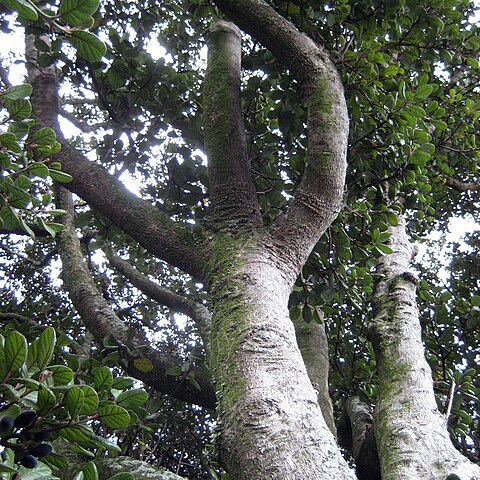A tree. It can grow 22 m high. The trunk is straight. It can be 1 m across. The bark is smooth and brown. The leaf stalks are 1.5 cm long. The leaves are swollen between the veins. The leaves are almost as broad as they are long. There are reddish-brown hairs on the small branches. The flowers are small. They grow in clusters 10 cm long. The fruit are purplish-black. They are oval and fleshy with a hard stone inside. The fruit can be 3.5 cm long.


